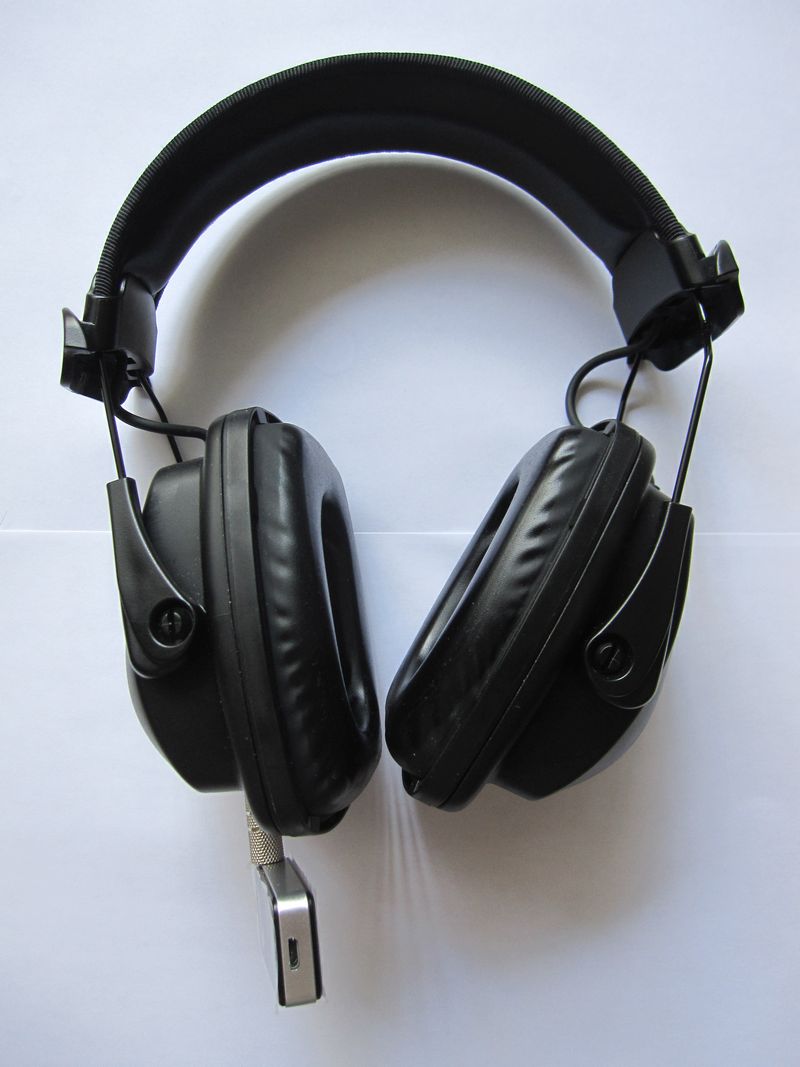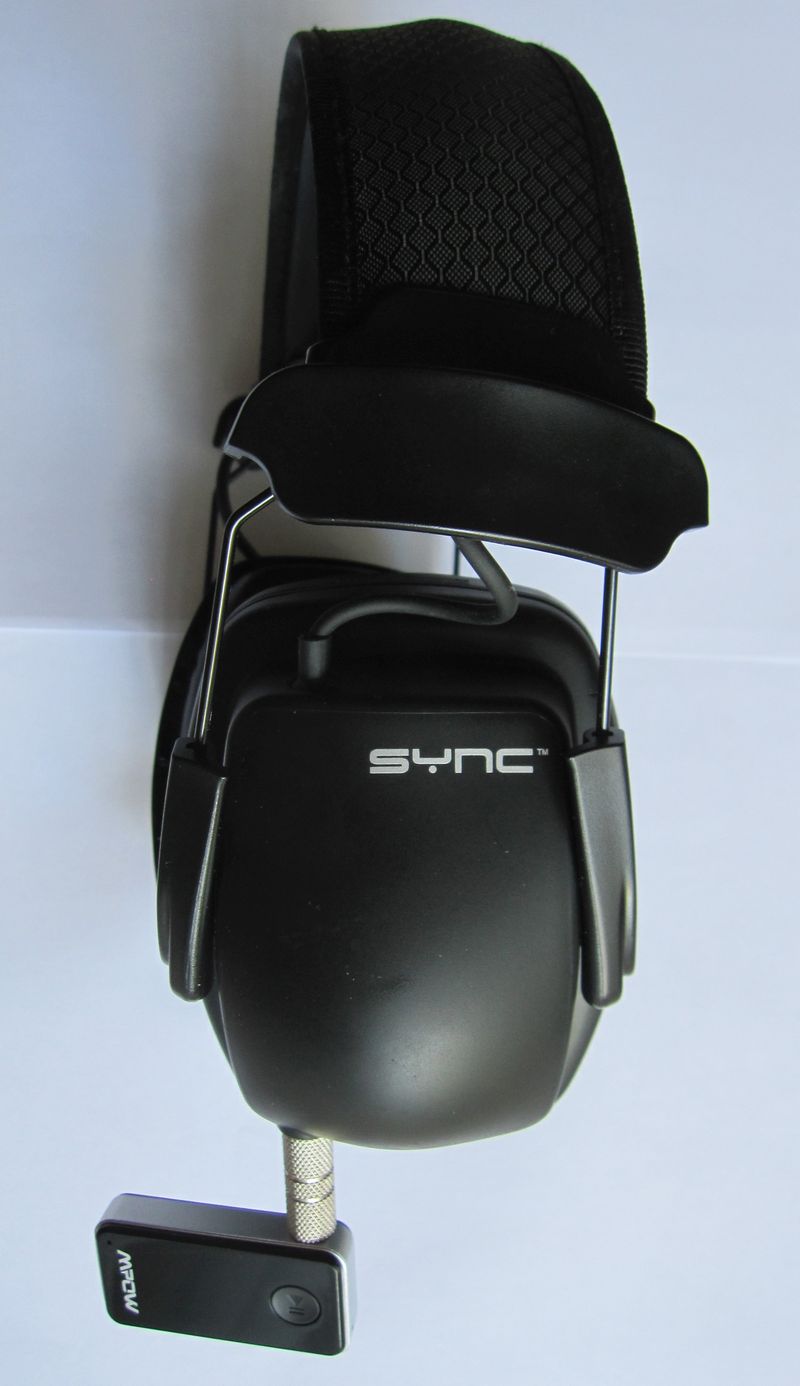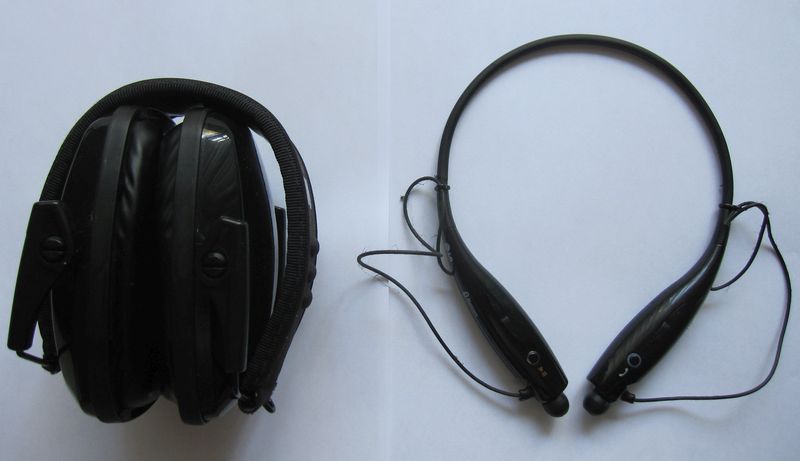Poor man's Bose - Open Office and On The Go Noise Control
Created: 2016-09-19 Mon
This is a note that I will point people to when they ask me about my solution to the problem of noisy office environments and also public transit noise (train/subway/bus).TLDR:
- ($46) For a cheap alternative to Bose noise canceling headphones for office noise control get the Leight Sync earmuffs and a headphone bluetooth adapter and listen to brown noise at Simply Noise. NOTE: For high end sound and more money get the UltraPhones
- ($90) For on the go noise control (bus, train, airplane) get a pair of Leight L0F portable earmuffs to use with the LG wireless headphones.
When I started working at the one and only startup I've been involved with everyone was young and eager to try the latest and greatest ideas to make things work as effectively as possible. One of the ideas we adopted was the open plan office. This is the plan where all the employees desks are sitting next to each other so everyone can see and hear everyone else which improves communication and strengthens teamwork. Of course I read Peoplewear and was aware of how difficult it will be to stay in the zone in such an environment but in the great scheme of trade-offs the open office plan came ahead. Did I mention I was the lead software developer at the company and had to be able to stay in the zone for solid chunks of time to deliver the promised code. Oh well… how did I deal with it?
First everyone went through the standard headphones plus music stage. It didn't work very well for me. Music after a while gets tiring - especially when I'm in my 8th hour of listening through emotionally taxing soundtracks like Two Steps from Hell. It also needs to be cranked up pretty high to overpower the people talking around me - and that damages my hearing. As I like my hearing to be "not damaged" - no music for me. Then a couple of us went through the white noise generator stage - which I would say was somewhat successful but also needed to be quite loud to drown out surrounding conversations.
Then there was the white noise generator plus bandana stage. That didn't improve on the solution by much. The bandana was used as a signal - every time someone had it on we would try to keep quiet as we knew they need to stay focused and work hard. Then came the Bose noise-canceling headphones stage.
Let me tell you about Bose headphones - I have two pairs of their QC20s. I've bought my first pair in March 2009 and the second about 3 years ago - (it is so that an electronic piano can be played in the middle of the night). Bose are great headphones for looking like you are an audiophile. As far as I can tell - from talking to friends who are recording music in studios - nobody uses them professionally. The first pair I bought was $270 and as far as their "noise-canceling" technology goes they need to increase the canceling to 11. They do a pretty good job with steady constant droning noises (like the HVAC fans) but any higher frequency sound - like people talking - is left uncancelled. On top of their lack of cancelling in the frequency band that matters they are designed for obsolescence (i.e. they break apart within a few months of daily use) so you need to purchase expensive replacement parts for them. I've replaced the ear cups on them twice so far and for the last pair I've been very careful not to damage them. The problem is they come undone even if I barely use them and at $30 a pair they are expensive!!! When I noticed the head band is starting to peel off I realized these headphones are not for me. All in all the Bose are maybe worth 1/4 the money they charge for them. Though there was a silver lining that hopefully made my Bose experience worth it - I noticed that most of their "noise-cancelling" was actually passive and consisted of good noise suppression from the good seal created by the headphone ear cups.

Fig. 1 Damaged Bose QC20 ear cups.
Sometimes in the last couple of years I noticed that Leight was offering their Leight Sync earmuffs. These were very close to what I needed. I purchased a pair and yes combined with a white noise generator they were very close to a final solution for my office noise problems. Though they did have trait I disliked - they needed a wire that would connect them to my computer. I cannot count how many times I rolled my chair away from my desk to test some hardware to have my headphone wire drag me back like a dog in a leash. And then I found the headphone bluetooth adapter - which transformed the Leight Sync into wireless noise cancelling headphones and made my final solution complete. The final sticker price for this wireless office noise control solution I use and promote to others to adopt comes to about $46.


Fig. 2 Leight Sync with bluetooth adapter front and side view.

Fig. 3 Leight L0F and LG bluetooth headphones.
A note on noise generators
There are many white noise generators out there. I use the very popular Simply Noise. And even though I say I listen to white noise I find that brown noise to be somewhat more effective at silencing voices around me. I think this is because brown noise focuses most of its power over the lower frequencies - where the ear muffs have the hardest time suppressing sound.

Fig. 4 Leight Sync noise attenuation profile with brown noise or
pink noise complementation.
Also a few notes on earmuffs
- The first two weeks of wearing earmuffs they seemed to press on my head in a strange way that made my ears, jaw and head hurt. After a while of me stretching the earmuffs and my head getting used to them they became much more comfortable.
- Depending on the shape of your head the head band of the earmuffs can make the crown of your head hurt - though this is not limited to earmuffs as may headphones have this undesirable feature.
- Howard Leight earmuffs seem to be of two types the Honeywell and the Sperian - I guess Leight licensed their products to both of these companies to produce. I've only had a couple from both - so I might not have a statistically significant N here - but it seems to me Sperian is slightly better quality than Honeywell.
- If you would like a high end audiophile solution to replace the Leight Sync check out the UltraPhones - which combine the same 29db hearing protection with the SONY 7506 Professional Studio Monitor Headphones).
-
For a cheap - just ear muffs - noise reduction solution nothing
out there beats the $45
3M PELTOR X5A. They look dorky but they are dead quiet.
